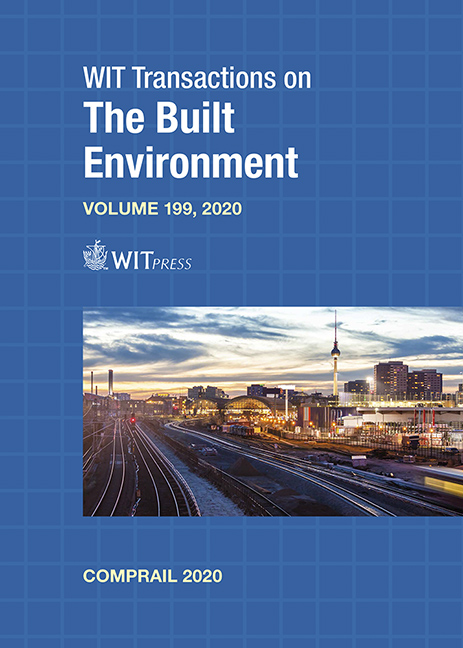DEVELOPMENT AND VERIFICATION TEST OF ELECTRICAL INDICATOR FOR 1.5 KV DC FEEDER IN ORDER TO VISUALIZE ENERGIZED CONDITION
Price
Free (open access)
Transaction
Volume
199
Pages
7
Page Range
163 - 169
Published
2020
Paper DOI
10.2495/CR200151
Copyright
WIT Press
Author(s)
YOSHIHISA MITOMA, KEITA HASEGAWA
Abstract
The overhead contact line system is essential to supply traction power to trains. 1.5 kV DC is mainly adopted in the metropolitan area. The overhead wires are congested near the traction substations and the large scale passenger stations. When on-site workers start maintenance or improvement work for the overhead contact line system, the overhead wires should be de-energized individually in order to avoid electrical shock. We have developed the electrical indicator for 1.5 kV DC feeder in order to visualize energized or de-energized condition. The electrical indicator consists of a cylindrical electrode, detection circuits, rechargeable batteries, charging circuits, solar cells and LEDs. The electrical indicator can visualize energized or de-energized condition on the overhead wires by the LEDs. The cylindrical electrode covers the overhead wire and detects the ripple voltage. The earthing wire has been successfully removed by focusing on the electric field, although the detection of 1.5 kV DC voltage basically needs the earthing wire to settle the reference potential. A fail-safe system which will activate the LED in event of a malfunction of the electrical indicator has been also devised, even during de-energized condition. Subsequently, the verification test in the laboratory, where an overhead wire on 1.5 kV DC is able to be energized, have been conducted. Threshold voltage level of the LED for the energized condition has been founded by measuring the ripple voltage using the oscilloscope. Moreover, the visibility of LEDs at a distance of 5 m in de-energized condition have been confirmed. In conclusion, we have developed the electrical indicator for 1.5 kV DC feeder and conducted verification test, enabling visualization of energized or de-energized condition. We will continue to make further improvements on electrical indicator and aims to introduce the device into the field for practical use in the near future.
Keywords
electrical indicator, 1.5 kV DC feeder, visualizing energized or de-energized condition





